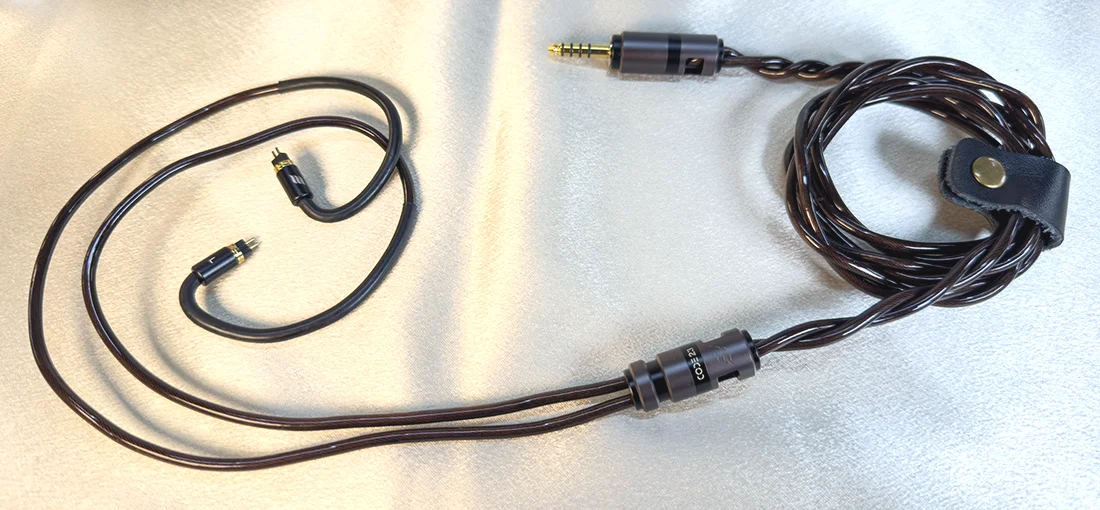Amplification Performance

I recently received a Mass Kobo 475 portable earphone amp and am keen to learn how the DOMEs scale with better amplification. I rate the 475 as simply the best portable amp money can buy, it’s fully balanced with 4.4mm input & output, delivering 2.3V RMS from its’ balanced jack.
It’s obvious at once the DOMEs love amplification. Dynamics improve substantially & so does note weight, two areas the DOMEs weren’t lacking in so they’re now pushed into seriously impressive territory.
Soundstage depth & layering improve quite a bit, by contrast these are areas the DOMEs underperform without the extra grunt. However where I really notice the biggest change is how much richer & more effortlessly resolving vocals are – it almost feels like a handful of extra Sonion BAs have been jammed in there, and the DOMEs transform from having a midrange that’s pleasant enough without being spectacular, to one I find immensely more engaging.
Of course the stage is also wider, the background is blacker and imaging is more defined, but it’s mostly those stage depth & midrange improvements that transform the DOME experience for me. Admittedly the 475 amp is as good as it gets by portable standards so lesser amps won’t deliver benefits of quite the same magnitude, but this gives you some idea of how much for potential for scaling is there.
Cable Comparisons
Naturally I tested the DOMEs with a number of cables from my collection, and interestingly find they don’t scale with cables quite as dramatically as other Penon IEMs.
I’ve noted improvements in many areas by rolling cables but the magnitude of those changes is slightly down on what I’m used to seeing, though it’s difficult know if that’s the result of DOME’s driver configuration, tuning or both.
ISN S4 (USD $55)

I was keen to learn if the Neo5’s stock cable would make the DOME’s sound more similar to them.
The S4 makes the DOME midrange feel slightly more resolving and bass may be a bit more impactful, there’s also a tiny bit more treble sparkle. It feels like the stage is being stretched a little wider, though it also feels a touch shallower. Tonally the balance shifts away from the lower midrange with a slightly cooler tonality, and I do prefer the stock cable in that department.
NiceHCK FirstTouch (USD $89)

This cable reduces DOME’s treble to produce a darker tonality, with bass hitting a bit harder. Thanks to a blacker background midrange resolution is more impressive which is FirstTouch’s standout quality.
The soundstage also feels slightly wider & deeper and dynamics are enhanced a little. FirstTouch’s sonic improvements aren’t as dramatic DragonScale’s below, but this is a far better cable ergonomically with very soft nylon braiding – as opposed to DragonScale being quite stiff below the Y-split due to what feels like additional shielding.
NiceHCK DragonScale (USD $157)

DragonScale grows the soundstage in all directions, making everything feel larger with a greater sense of scale that’s easily noticeable, with what feels like more space between notes to give the performance much more room to breathe.
Although resolution & dynamics are also improved, the downside is the tonality shifts upwards with greater emphasis on the upper midrange & treble that doesn’t feel quite as earthy, and vocals are pushed back in a way I don’t care for though there’s no doubting the stage improvements.
Effect Audio Ares S 4 Wire (USD $179)

This is an impressive pairing, with Ares S delivering slightly more bass punch through an increase to midbass, generating a warmer tone yet surprisingly also makes vocals feel a bit more resolving.
The DOME stock cable feels slightly brighter by comparison, but Ares S boasts a slightly blacker background with both a wider & deeper stage and I’m surprised how much more spacious it feels even though the dimensions aren’t drastically different.
Effect Audio Code 23 (USD $599)

With some of the most questionable ergonomics of any cable, Code 23 is certainly unique. I immediately notice the soundstage improvements this cable is famed for, with the stage both widening & deepening though not quite to the extent I’d hoped.
Vocals are more forward on Code 23, with enhanced midrange resolution, slightly deeper bass and improved dynamics. However I find the amount of improvement in each department to be very minor, which makes this pairing feel like a letdown given the cable’s cost & excessive stiffness.
Page 1 – Introduction, Packaging & Ergonomics
Page 2 – Sound Impressions & Technical Performance
Page 3 – IEM Comparisons
Page 4 – Amplification Performance & Cable Comparisons
Page 5 – Conclusion


Comments